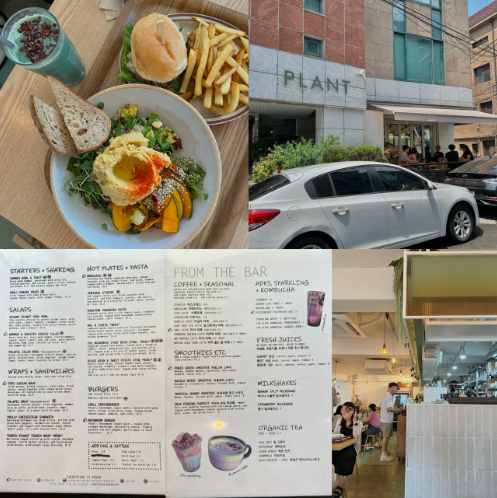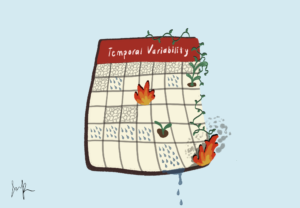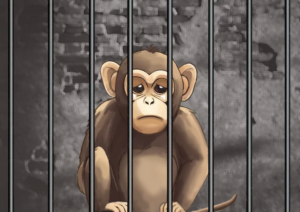
With the increased focus on reducing the carbon footprints we leave behind in our day-to-day lives, there has been increased attention on vegetarianism. As people turn to more sustainable options, the simplicity of cutting out meat from meals seems to have shown more appeal than the sacrifice of comfort to quite a few—for example, not using a car or not turning on the heater at home.
I myself have many friends who decided to go pescatarian, vegetarian, or vegan as their new year’s resolutions. Watching at least one of my friends each year turn to vegetarian diets, I was motivated to do the same, but one worry got in the way: could I really commit?
This past year, I had the wonderful opportunity to study in Seoul, South Korea. No longer limited by a university meal plan and working a job, I had the most control over my diet than I had ever had before, and I figured that 2023 would be the perfect year for me to go vegetarian.
But there was one important detail that I had forgotten. If you have some sort of social life in South Korea, it is really, really difficult to cut meat from your diet. When the Korean word for “company dinner” is mentioned, it’s hard to picture without a charcoal grill with pork belly and soju. Get-togethers with large groups of friends often conjure the same image, and it doesn’t help that Korea’s food delivery apps are insanely well set-up—a classic go-to delivery food being Korean fried chicken. So, in such a country, with a fortunately decent social life, how was I to avoid consuming meat?
It’s not that vegetarian options are difficult to find in Seoul. In fact, I don’t know if there’s any type of food that is difficult to find in Seoul; there is always so much to eat. Anyways, irrelevant to any sort of commitment I attempt to make towards not consuming meat, on some days, I sometimes just crave the feeling of cleanness that I am left with when I consume plant-based meals. So, on those days, I’d make the little trip to find a vegetarian restaurant to get my meat-free meal. And while I could have easily found a vegetarian option at Seoul National University’s student dining, or a perfectly meat-free meal at the convenience store, I didn’t want to feel that eating a plant-based diet was limiting myself to those options.
So in my frequent adventures to find good restaurants, here are two amazing vegan restaurants I stumbled upon during my time in Seoul that I am most definitely visiting again this summer.
Plant Café & Kitchen

plantcafeseoul.com
I ordered:
- Power Green Smoothie
- ₩9,000 / ~$6.84
- Hummus & Roasted Squash Salad
- ₩14,500 / ~$11.02
- Mushroom Burger
- ₩12,500 / ~$9.50
I’m not a very good food reviewer, so I will refrain from saying much more about my order other than the fact that I would definitely get the Power Green Smoothie again.
+ So many tables around ours ordered the Rigatoni Pomodoro Pasta, so I’d definitely try that, too.
Plant Café & Kitchen operates as a restaurant/cafe that also sells whole cakes and baked goods available to order (not pictured on the menu). For a restaurant located in one of Seoul’s most popular neighborhoods, the price for quantity and quality is very fair, if not much less than expected.
The restaurant ensures that all their menu items are 100% vegan and have been produced in a vegan facility.
Something that I noticed when I visited Plant Café & Kitchen was the foreign vibe of the restaurant. None of the employees I saw on that day were ethnically Korean, and simply from the exterior and interior, my companion of that day and I agreed that the restaurant exuded an LA vibe. We wondered if this was intentional—perhaps the concept of veganism was seen as a foreign (Western) concept? That didn’t seem too unlikely, based on the fact that, just based on the culture and cuisine, there really aren’t many Koreans who choose to be vegan.
That question was left unanswered, but upon a closer read into the restaurant’s website, I found out that the founder herself is ethnically Korean but grew up in parts of Africa and the Western world. Plant Café & Kitchen, it seems, ultimately came from her recognition of the “lack of resources for fellow English-speaking vegetarians and vegans” (Plantcafeseoul, n.d.). I assume that this must be the reason the restaurant values diversity in hiring their employees, as it is also advertised on the homepage.
Plantude

I ordered: Like Tender Yuringi ₩16,900 / ~$12.84 Soft Tofu In Hell ₩13,900 / ~$10.56 Truffle Sea Trumpet Cream Tteokbokki ₩13,900 / ~$10.56 Bracken Oil Stock Pasta ₩15,500 / ~$11.78 Rice Bowl with Tofu Cutlet and Vegetables & Tomato Soft Tofu Stew ₩15,900 / ~$12.08 Tangerine Salad ₩10,900 / ~$8.28 Crunchy Vegetable Spicy Noodles & Gyoza Dumplings ₩14,900 / ~$11.32 Fried Assorted Mushroom and Tofu(Gangjeong) ₩10,900 / ~$8.28
Plantude doesn’t seem to have a restaurant website, and as its menu items are less obvious by name, I’ll explain some of what I ordered:
Like Tender Yuringi: “Yuringi” is a Korean-Chinese dish and is served as cutlets of fried chicken in a soy sauce based sweet and sour sauce. Instead of chicken, Plantude uses “Like Tender”, which is a textured, firm tofu imitating the texture of meat.
Truffle Sea Trumpet Cream Tteokbokki: “Tteokbokki” is a classic Korean favorite—spicy rice cake, usually with fish cake in the sauce as well. This menu is served in a (non-dairy) cream sauce instead, made from a macadamia nut cream base.
Rice Bowl with Tofu Cutlet and Vegetables & Tomato Soft Tofu Stew: I realized this dish is supposed to mimic donkatsu, the Korean style of tonkatsu, a Japanese dish with breaded, fried pork cutlet that usually comes with rice. Instead of pork, Plantude uses breaded tofu to make the “katsu” cutlet and serves it over brown rice and vegetables.
Fried Assorted Mushroom and Tofu(Gangjeong): “Gangjeong” by definition is a deep-fried rice puff, but if you ask a Korean what they think of when you say “gangjeong”, they will usually think of “dakgangjeong”, sort of like Korean popcorn chicken glazed in a sticky sweet and salty sauce. Instead of chicken, Plantude uses tofu and shiitake mushroom to create the meat consistency in typical gangjeong.
There are, of course, many more vegan restaurants around Seoul, and as the move towards sustainability gains more attention, non-vegan restaurants have also moved towards including vegetarian and vegan options in their menus. I find this especially prominent in fine dining. I feel as if restaurants focusing solely on Korean cuisine itself typically do not have separate vegetarian menu items, but that isn’t to say that there aren’t foods in Korean cuisine that are not meat-free.
Anyhow, visiting these vegan restaurants and cafés around Seoul made me realize that going meat-free does not need to reduce the quality of the food that I eat. Whenever I picture the “vegetarian option”, I think of mimicry, which then always must be somehow lesser than the original. However, these restaurants showed me that this is not the case, and I can have just as tasty of a meal without animal-based products.
Another point to take away: you don’t have to cut out meat or animal-based foods from your diet entirely to make an impact.
Suddenly converting to vegetarianism, veganism, or even pescetarianism after having been exposed to meat all your life is hard. It makes the New Year’s resolution that you made harder to stick to, less motivating, and if you give up after three-ish days, less impactful. It’s better not to make that choice if you will only end up feeling guilty at being unable to perfectly accomplish such a goal.
What I resolved to practice instead is flexitarianism. Coming from the words “flexible” and “vegetarianism”, “flexitarianism” is exactly what it sounds like: flexible vegetarianism. Flexitarians primarily focus on vegetarian foods, but are flexible in that they don’t have to give up meat altogether. The flexibility, thus, appeals to many more people.
Then is this not the same as a normal person’s diet, since we don’t consume meat every meal? What’s the point of flexitarianism? The difference, at least as I observe for myself, is that when you practice flexitarianism, you’re making a goal out of limiting your meat intake. Creating a goal makes your eating habits conscious and intentional, rather than a random what’s-the-vibe type of choice. Not to say that what’s-the-vibe is bad. However, making conscious choices does make a difference, even if it’s just every once in a while.
By not eating the typical amount of animal-based products for one day, we can save 3.4 Kg of carbon dioxide. In one year, that’s about 180 Kg of carbon dioxide if we have a vegan day once per week. According to various sources, 180 Kg is the amount of carbon dioxide you can save if you don’t use a car for three months. And for one day a week, I’d say that’s a pretty good deal.
Flexitarianism is something that I have no problem sticking to, even after having been faced with the occasion of social life in Korea, and even though I am, admittedly, an avid meat and dairy enjoyer. Having the power of choice makes flexitarianism far more realistic for me and easier to stick to without 1) guilt, 2) restrictions, or 3) a sacrifice of good food. Simply put, flexitarianism is just conscious eating. It’s very possible—if I can do it, you can too.
The views and opinions expressed are those of the authors and do not necessarily reflect nor represent the Earth Chronicles and its editorial board.




